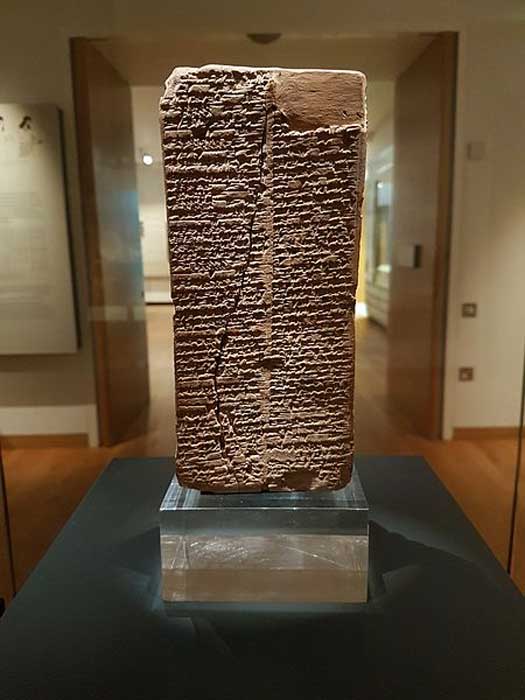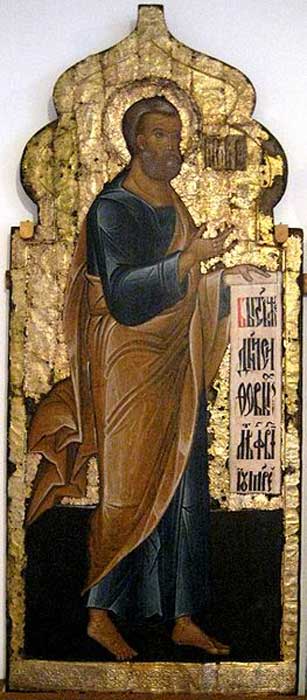
Is There a Natural Explanation For The Unnatural Ages in Genesis?
Is there any significance to the puzzling ages of the antediluvian patriarchs in the fifth chapter of Genesis? And why do these numbers differ between the Masoretic text and the Septuagint?
These questions occupied the Swedish 19th century novelist, journalist, scholar and later member of parliament, Viktor Rydberg during the late 1860s.
In 1869, he had come up with answers to these questions that were published in Swedish. The ideas of Rydberg caught the interest of Samuel Birch of the British Museum and a paper was published in English a few years later in Transactions of the Society of Biblical Archaeology (1877:vol.V) under the title “Key to the genealogical table of the first patriarchs in Genesis”.
Since then, the paper has been left largely unnoticed.
- The Sumerian King List still puzzles historians after more than a century of research
- Dead Seas Scrolls Reveal that Noah's Ark Was Shaped Like a Pyramid
- Legends, Mysteries, Light and Darkness: The Secret History of the Biblical Cave of the Patriarchs

Lifespans of the Biblical Patriarchs. (CC BY SA)
Rydberg’s Thesis
The paper suggests that an astronomical table is hiding behind the numbers of the patriarchs. That table includes figures central to the astronomy of the time and specifically crucial to the archaic Hebrew lunisolar calendar.
However plausible the solution was, it remained quite speculative with little source material to support it. Later archaeological findings however, like the Sumerian King List and the Dead Sea Scrolls, seems to offer some support to Rydberg’s thesis.

Cuneiform writing on a clay brick, written in the Sumerian language (during the time of the Akkadian empire), listing all kings from the creation of kingship until 1800 BC when the list was created. Displayed at Ashmolean Museum, Oxford. (CC BY SA 4.0) This is one piece of evidence which seems to offer support for Rydberg’s thesis.
Let´s take a closer look at it. Comparing the lineages in Genesis 4 and 5, Rydberg assumed they shared a common source document, which he set out to reconstruct. He believed Seth, rather than Elohim, had been the divinity in the original document. Since the names Adam and Enosh has the same meaning, he figured one of them was added later. Seth and Enosh were therefore not included in the reconstruction. He ended up with a list of eight antediluvian patriarchs.

Seth. Patriarchs line in iconostasis. Zhdan Dementiev, Vologda. Cathedral of the Assumption, St. Cyril-Belozersky Monastery. Museum of Cyril Belozersky Monastery. (CC BY SA 3.0)
In Genesis 5 three numbers are connected to each patriarch. Their age at the birth of their first son, the remaining years of their life, and their age at death. The age of Enoch being 365 has been taken as a hint towards an astronomical interpretation. Arranging these numbers in columns and adding them together confirmed the astronomical hint. The first column gave the number 1461, otherwise known as the Sothis-cycle - the number of years between two heliacal risings of the star Sirius on the same date of the solar year. This would imply that the deluge happened exactly a Sothis-period after the creation of man.

‘The Deluge’ (1834) by John Martin. (Public Domain)
The second column yielded the number 4947. That number happens to be the number of lunar years equivalent to 4800 solar years. In 600 years, this cycle diverges with less than a day, if an intercalary day is observed every 50th year. This fits perfectly with the so-called jubilees described in Leviticus (25:8–13).
These two exact numbers occurring when the ages of the patriarchs are added together can hardly be explained away as mere coincidences.
Supporting Evidence
Furthermore, the unearthing of the Sumerian King List provides a possible explanation to why the Masoretic text has ten patriarchs rather than eight.
Also, it is well known since the finding of the Dead Sea scrolls in the 1940s that the calendar was a burning issue for the movement that took refuge in Qumran by the Dead Sea. By the time the Qumran Community was established, the temple in Jerusalem had adopted several Greek customs, among them the more convenient metonic 19-year cycle for making calendars.

Two scrolls from the Dead Sea Scrolls lie at their location in the Qumran Caves before being removed for scholarly examination by archaeologists. (Public Domain)
Moreover, comparing the Masoretic text with that of the Septuagint, Rydberg noticed some important differences. Although the full ages of the patriarchs are the same (except for Lamech), their ages at the birth of their first sons (and hence the remainder of their lives) differ considerably. By the time of the first Greek translation of the Torah, the astronomical significance may very well have become out of date in favor of the Greek lunisolar calendar. However, the lineage did serve a purpose as a pseudo-historical document tying together later events with the creation of the world.
Rydberg argued that the Masoretic text was based on Babylonian documents for exactly this purpose.
- A Patriarchal Portrait of a Witch: Warning of Witchcraft in the Female Wiles
- Secrets of the Knights Templar: The Knights of John the Baptist
- Enochian: The Mysterious Lost Language of Angels
The Septuagint, on the other hand, was corrected to harmonize with the historical documents of the Egyptians, most probably Manetho’s Aegyptiaca. When comparing lineages of the patriarchs after the flood in the Septuagint, they seem to match the king lists of the Egyptians up to the time of the 30th dynasty.
The time of the first eleven dynasties of Egypt adds up to a period of 2262 years, and so do the Septuagint numbers of the patriarchs before the flood.

Genesis 5:24: "And Enoch walked with God: and he was not; for God took him." (KJV) illustration from the 1728 ‘Figures de la Bible’; illustrated by Gerard Hoet (1648–1733) and others, and published by P. de Hondt in The Hague; image courtesy Bizzell Bible Collection, University of Oklahoma Libraries. (Public Domain) Enoch was the seventh of the ten pre-Deluge Patriarchs.
Likewise, the time from the flood to the Exodus amounts to 1777 years in the Septuagint, which matches the time from the twelfth dynasty up until Pharaoh Tutmosis. And finally, the time from the Exodus to the end of the 30th dynasty is 1117 years in both the Septuagint and the extant fragments of Aegyptiaca.
In sum, Rydberg’s paper suggests that the numbers in Genesis 5 were originally an astronomical table, but when Greek calendars made the jubilee calendars obsolete these numbers were used to reconcile the histories of the Hebrews with the Babylonians in the Masoretic text, and with the Egyptians in the Septuagint.
Top Image: ‘Abraham and the Angels’ by Aert de Gelder ( Wikipedia). Abraham was said to have lived to the age of 175.
By Nils Ekblad
















Comments
Even this is interesting but more interesting if taking the bible seriously is that India rulers had much longer lives even hundreds of thousands of years.
I think in the early days of civilization before they fully understood the motion of the earth around the sun and how to measure the length of a year they counted moon cycles to mark their age, but that got lost in translation. We can see and count the cycles of the moon which gives us a 29½ day calendar. A man of 960 moons would be about 84 years old, a man of 600 moons would be about 53 years old etc.
Veronica-Mae, I have studied the first 5 chapters of Genesis very deeply and have arrived at this very same conclusion. The planet was covered by a shroud of dust, smoke and debris, so that the shape of the Earth could not be determined from the outside, so that the gods had to come down to the surface to see what they were doing "the spirit of god moved upon the face of the waters."
Mankind is VERY destructive, so that we may have "killed" it many times in the past and left not a trace behind.
I wonder whether anyone else has picked up on the fact that the bible talks of the earth having BECOME dark and void ? There is no mention of the earth itself being created at that point only of it apparently being restored and repopulated. If this is so then a worldwide catastrophe could well have resulted in the extinction of all previous life. So a new era began exactly when the bible says it did, yet the earth itself was ancient. Whether you believe the bible or not, a devastated earth would have restored itself over time - just as it will once again after we have have stupidly destroyed it (either through our constant attacks on nature or through nuclear war.)
So how long were their lives?
Pages